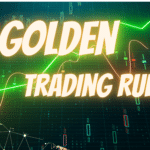How Regulatory News Impacts Crypto Prices

Cryptocurrencies, Signals, Trading
Have you ever checked your crypto portfolio in the morning and seen everything suddenly down 15%—only to discover that some government official made an announcement the night before?
You're not alone. This happens to every crypto trader, especially when you're just starting out. One minute, everything looks green and promising, the next minute, your coins are bleeding red, and you're frantically googling "why is crypto crashing today?"
Regulatory news is one of the most powerful forces that moves crypto prices, and yet it's something most beginner traders completely overlook until it hits them in the wallet.
Regulatory news means any official statement, proposal, or decision from governments, banks, or financial authorities about how cryptocurrency should be controlled, taxed, or managed.
By the end of this article, you'll understand:
- Why government announcements can make Bitcoin jump or crash in minutes
- Which types of regulatory news should you actually pay attention to
- How to spot these announcements before they wreck your portfolio
- What to do when major regulatory news breaks
Let's break this down in a way that actually makes sense.
Why Does Regulation Even Matter?
Imagine you're at a farmers' market buying vegetables. You feel comfortable handing over your money because you trust that:
- The market is legal and won't get shut down tomorrow
- You won't get arrested for buying tomatoes
- The vendors aren't going to disappear with your money
- There are basic rules protecting you from getting scammed
Now imagine if the mayor announced they're considering banning the farmers market. What would happen? Vendors would panic, buyers would stop coming, and prices for everything would drop as vendors tried to sell off their inventory quickly.
This is exactly what happens with cryptocurrency and regulation.
Crypto exists in a gray area in many countries. Some governments embrace it, others fear it, and most are still figuring out what to do with it. When a major country announces new rules (or threats of banning crypto), traders react with their wallets—buying or selling based on whether they think it's good or bad news.
The prices of Bitcoin, Ethereum, and other cryptocurrencies are determined by supply and demand. When regulatory news makes people nervous, demand drops and everyone rushes to sell. When regulatory news is positive and makes crypto seem more legitimate, demand increases and prices rise.
Which Countries Move the Market Most
Not all regulatory news is created equal. When tiny countries make crypto announcements, the market barely notices. But when certain powerhouse nations speak up, crypto prices move dramatically.
The countries whose regulatory news matters most:
The United States
When the U.S. Securities and Exchange Commission (SEC), Federal Reserve, or Congress talks about crypto, the entire market pays attention. The U.S. has the world's largest economy, and many major crypto exchanges and investors are based there.
Real example: In January 2024, when the SEC approved Bitcoin ETFs (investment funds that hold Bitcoin), the price jumped from around $46,000 to over $49,000 in just a few days. That's a 6.5% gain triggered by one regulatory decision.
China
China has banned crypto trading multiple times, and each announcement has caused massive price drops. Even though China has "banned" crypto several times already, whenever it makes new statements, the market still reacts.
Real example: In May 2021, when China announced a crackdown on Bitcoin mining, BTC dropped from$58,000 to $35,000 in just two weeks—a 40% crash.
The European Union
The EU represents 27 countries and over 440 million people, so its regulatory framework (called MiCA) has enormous implications for crypto adoption.
Other important players:
- United Kingdom - Major financial hub, many crypto companies operate there
- Japan - Early crypto adopter with clear regulations
- South Korea - Huge crypto trading volume
- India - Massive population, constantly changing stance on crypto
Pro Tip: Follow regulatory news from these countries closely. When smaller nations make announcements, they usually won't affect prices much unless it's part of a broader trend.
Types of Regulatory News That Move Prices
Let's break down the different categories of regulatory announcements and what they typically mean for prices. Not all news is created equal!
1. Bans and Restrictions (Usually Bearish )
This is when governments say "You can't do X with crypto anymore." These announcements typically send prices down because they reduce demand and access.
Examples include:
- Banning crypto exchanges from operating
- Prohibiting banks from handling crypto transactions
- Making crypto mining illegal
- Restricting who can buy or trade crypto
What typically happens: Immediate price drops of 5-20% depending on the country's importance and severity of the ban.
Your move: Don't panic sell immediately. Often these drops are temporary as traders overreact, and prices recover within days or weeks.
2. Approval and Legitimization (Usually Bullish )
This is the opposite—when governments or regulators give crypto the green light in some way. These announcements tend to push prices up because they increase confidence and legitimacy.
Examples include:
- Approving Bitcoin ETFs or investment funds
- Creating clear, favorable tax rules for crypto
- Allowing banks to offer crypto services
- Recognizing crypto as legal tender (like El Salvador did)
What typically happens: Price increases of 5-30% depending on how significant the approval is.
Your move: If you were already planning to buy, these can be good entry points—but be careful not to FOMO (Fear Of Missing Out) and buy at the peak of the rally.
3. Uncertainty and Investigation Announcements (Usually Bearish )
Sometimes the news isn't a ban or approval—it's just governments saying "We're looking into this" or "We're considering new rules." Even uncertainty can move prices down because traders hate not knowing what's coming.
Examples include:
- Announcing upcoming hearings about crypto regulation
- Launching investigations into crypto exchanges
- Proposing new bills without final details
- Central bank warnings about crypto risks
What typically happens: Moderate price drops of 3-10%, often with increased volatility (bigger price swings in both directions).
Your move: Wait for clarity before making big decisions. These situations often resolve better than the initial panic suggests.
4. Exchange Actions and Enforcement (Can Go Either Way)
When regulators take action against specific crypto exchanges or companies, it can affect the entire market—even though it's technically just one company's problem.
Examples include:
- SEC suing a major exchange (like the Coinbase or Binance cases)
- Freezing exchange assets or operations
- Forcing exchanges to delist certain tokens
- Fining companies for violations
What typically happens: Usually short-term bearish (5-15% drops), but can create opportunities if the company survives and adapts.
How Fast Do Prices React? The Timeline of Regulatory Impact
Crypto markets react almost instantly to major regulatory news—we're talking minutes, not hours or days.
The typical timeline:
- 0-15 minutes after announcement: The fastest traders (and trading bots) react immediately. You'll see sudden, sharp price movements as people rush to buy or sell based on their interpretation of the news.
- 15 minutes to 2 hours: The news spreads across social media, Discord servers, Telegram groups (like Fat Pig Signals community), and trading forums. More traders react, often amplifying the initial move.
- 2-24 hours: Major news outlets and crypto media pick up the story. Analysis pieces start appearing. Prices might reverse if the initial reaction was too extreme, or continue trending if the news is genuinely significant.
- 1-7 days: The market "digests" the news. Prices typically find a new equilibrium based on what the regulatory change ultimately means in the long term. Smart money (experienced investors) often buys dips or takes profits during this period.
- 1+ months: The long-term impact becomes clear. Sometimes what seemed like devastating news turns out to be manageable, and prices recover. Other times, significant regulatory changes reshape the entire market.
Common Mistake to Avoid: Don't assume the first price reaction is the "correct" one. Markets often overreact in both directions. A 20% crash might recover to only a 5% decline once people actually read the details of the regulation.
Real-World Example: Following a Regulatory Event from Start to Finish
Let's walk through a real scenario so you can see how this plays out in practice.
The Event: On November 8, 2023, the U.S. Senate Banking Committee held hearings about crypto regulation, with several senators calling for stricter oversight.
Before the announcement (November 7):
- Bitcoin price: $35,200
- Market sentiment: Cautiously optimistic
- Trading volume: Normal levels
Day of the announcement (November 8, 9:00 AM EST):
- News breaks during the hearing that senators are pushing for tough regulations
- Within 30 minutes, Bitcoin drops to $34,200 (3% decline)
- Social media explodes with "crypto is getting banned" panic
4 hours later (1:00 PM EST):
- People actually read the hearing details
- Realize it's just discussion, not immediate action
- Bitcoin recovers to $34,800
- Some traders who panic-sold feel regret
Next day (November 9):
- Analysts publish thoughtful breakdowns
- Consensus: The regulations being discussed aren't as bad as feared
- Bitcoin climbs back to $35,400, actually higher than before
- Traders who bought the dip at $34,200 made quick profits
Lesson: The initial panic created a buying opportunity for those who didn't overreact. This pattern repeats constantly in crypto markets.
You're Now Ahead of Most Traders
Regulatory news will continue to move crypto markets. There will be more announcements, more uncertainty, and more volatility ahead. But now you have a framework for responding intelligently instead of emotionally.
Stay informed, stay patient, and never trade on emotion.
Join us in the Fat Pig Signals community where we navigate these regulatory waves together, share real-time analysis, and help each other become better traders.
You're not in this alone. Let's build those trading skills together!



